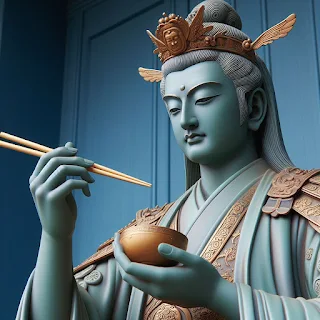Chopsticks are one of the most common utensils in Asia, especially in Japan, China, and Korea. They are simple, elegant, and versatile, but they also have a rich and fascinating history that spans thousands of years. In this article, we will explore some of the urban legends and myths about the origin and culture of chopsticks, as well as the etiquette and symbolism behind using them.
How Did Chopsticks Come to Be?
There are many theories and stories about how chopsticks were invented, but no one knows for sure. Some of the most popular ones are:
- Chopsticks were first used by the legendary Chinese sage Confucius (551-479 BC), who was a vegetarian and believed that sharp knives would remind people of violence and slaughter, so he advocated using chopsticks instead.
- Chopsticks were derived from tweezers, which were used to pick up hot food from boiling pots or to remove bones from fish. As food became more finely chopped and cooked, tweezers evolved into chopsticks.
- Chopsticks were invented by the ancient Chinese emperor Yu the Great (c. 2200-2100 BC), who ordered his people to use them during a great flood, as they were easier to carry and use than spoons or knives.
- Chopsticks were introduced to China by the Baiyue people, who lived in the south and southeast of China and were skilled in bamboo and wood carving. They used chopsticks as a tool for fishing, hunting, and eating.
How Did Chopsticks Spread to Japan?
Chopsticks were brought to Japan by the Buddhist monks who traveled from China to Japan in the 6th century AD. One of the most famous stories is that of Prince Shotoku (574-622 AD), who was a devout Buddhist and a regent of Japan. He is said to have received a pair of gold chopsticks from a Chinese envoy as a gift, and he used them to eat his meals. He also encouraged his subjects to adopt chopsticks as a sign of civilization and culture.
How Did Chopsticks Differ Between China and Japan?
Although chopsticks originated in China, they developed differently in Japan over time. Some of the main differences are:
- Length: Chinese chopsticks are longer (about 25-30 cm) than Japanese chopsticks (about 20-23 cm), because Chinese people tend to share dishes from a common plate, while Japanese people have their own individual bowls and plates.
- Shape: Chinese chopsticks are more blunt and rectangular at the tip, while Japanese chopsticks are more pointed and round at the tip, because Japanese cuisine involves more delicate and precise handling of food, such as sushi and sashimi.
- Material: Chinese chopsticks are usually made of bamboo, wood, while Japanese chopsticks are often made of lacquered wood, metal, or ivory, and are sometimes decorated with patterns, carvings, or inlays.
What Is the Etiquette of Using Chopsticks?
Using chopsticks may seem simple, but there are many rules and customs that govern their proper use. Some of the most important ones are:
- Do not stab, spear, or point with your chopsticks, as this is considered rude and aggressive. Use them to pick up food gently and gracefully.
- Do not cross your chopsticks, as this resembles the symbol of death in Japan. Place them parallel to each other on the chopstick rest or on the edge of your plate or bowl when not in use.
- Do not pass food from chopstick to chopstick, as this is a funeral ritual in Japan, where the bones of the cremated deceased are transferred from one person to another using chopsticks. Instead, use a plate or a spoon to pass food.
- Do not stick your chopsticks upright in your rice, as this is another funeral practice in Japan, where a bowl of rice with chopsticks stuck in it is offered to the spirit of the dead. Instead, lay your chopsticks flat on the chopstick rest or on the edge of your bowl.
What Is the Meaning of Using Chopsticks?
Chopsticks are not just a tool for eating, but also a symbol of culture, identity, and spirituality. Some of the meanings that chopsticks convey are:
- Harmony: Chopsticks represent the balance and harmony between the yin and yang forces, the male and female principles, and the heaven and earth elements. They also reflect the harmony between people, as they require coordination and cooperation to use.
- Wisdom: Chopsticks embody the wisdom and philosophy of Confucianism, Buddhism, and Taoism, which emphasize moderation, compassion, and harmony. They also express the wisdom of using simple and natural materials to create a sophisticated and elegant utensil.
- Sacredness: Chopsticks are regarded as a sacred instrument for communicating with the gods and ancestors, especially in Japan, where they are used in rituals and ceremonies, such as offering food to the spirits, praying for blessings, and purifying oneself.
Conclusion
Chopsticks are more than just a pair of sticks. They are a window into the history and culture of Asia, especially Japan, China, and Korea. They are a testament to the creativity and ingenuity of human civilization. They are a reflection of the values and beliefs of the people who use them. They are a way of connecting with the past, the present, and the future. They are, in short, a masterpiece of art and culture.








No comments:
Post a Comment